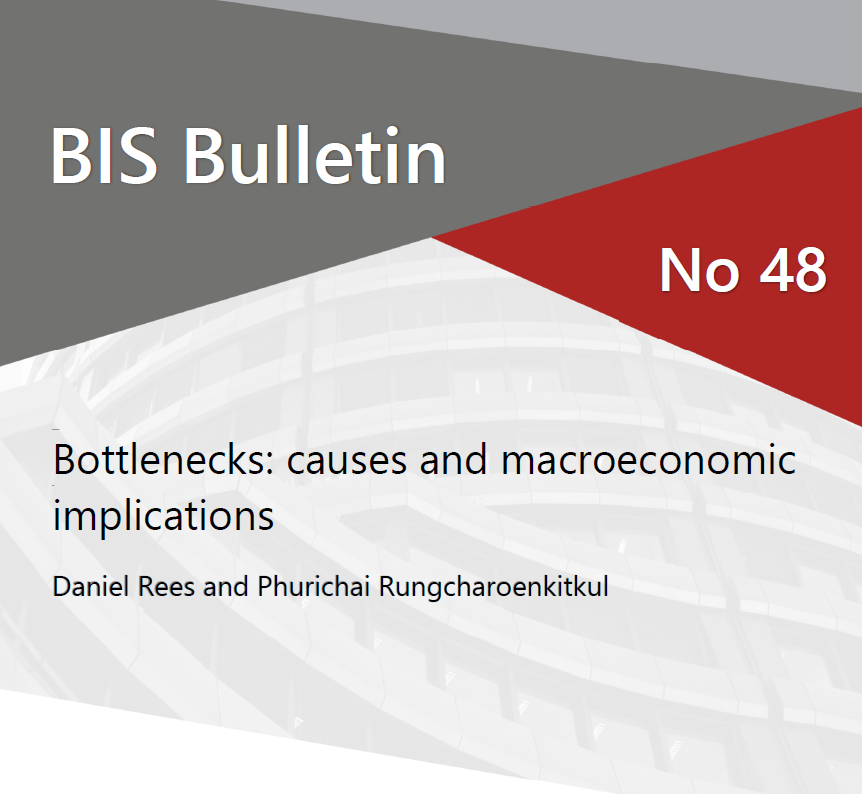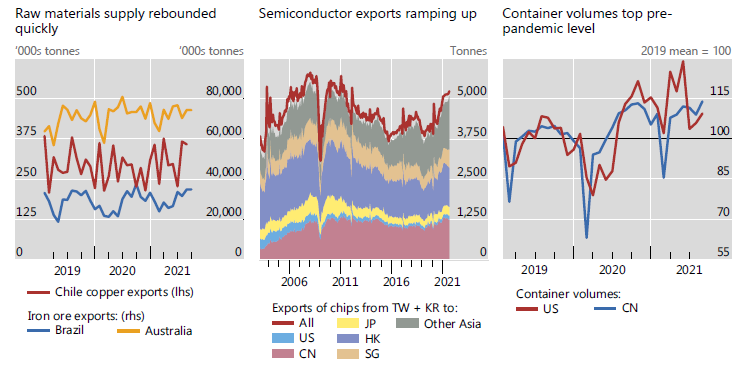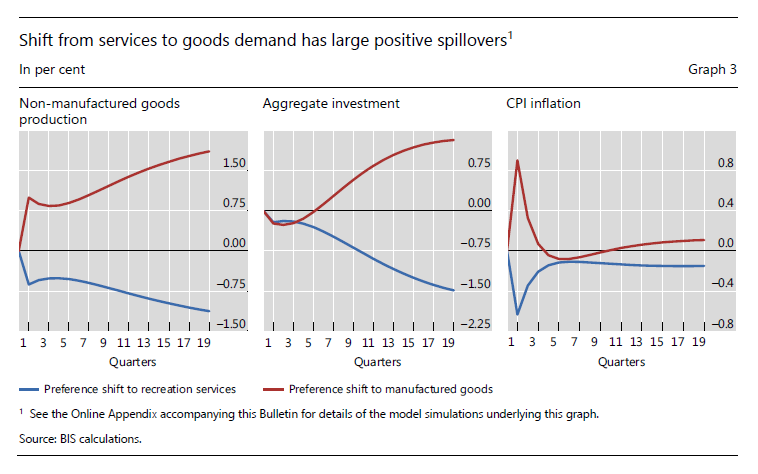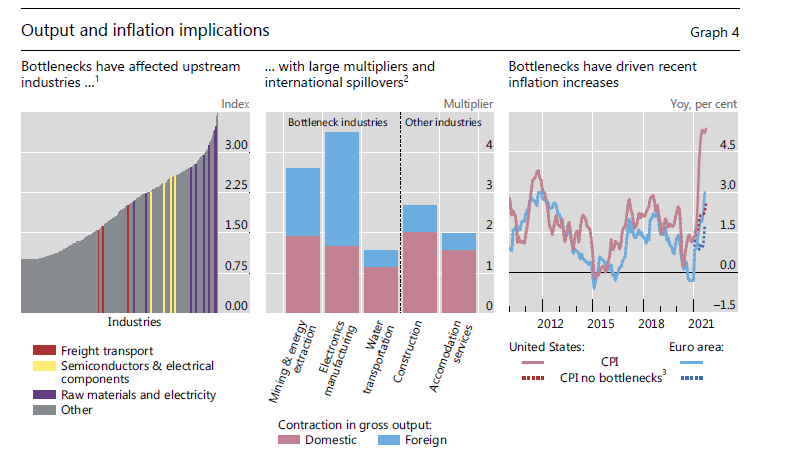Thread
The inflation surge has brought #bottlenecks under the spotlight
Today's #BIS_Bulletin takes a closer look at what's going on and what we might encounter going forward
A short thread follows
www.bis.org/publ/bisbull48.htm
Today's #BIS_Bulletin takes a closer look at what's going on and what we might encounter going forward
A short thread follows
www.bis.org/publ/bisbull48.htm
Bottlenecks started out as disruptions to supply, but they have morphed into something more
Key point to bear in mind: in aggregate at least, supply has caught up to pre-pandemic levels in key sectors like semi-conductors as well as in raw materials and shipping
Key point to bear in mind: in aggregate at least, supply has caught up to pre-pandemic levels in key sectors like semi-conductors as well as in raw materials and shipping
So, what then is going on?
Two factors are key: (1) shift in composition of demand and (2) the endogenous changes in behaviour that's given rise to bullwhip effects
Let me takes these in turn
Two factors are key: (1) shift in composition of demand and (2) the endogenous changes in behaviour that's given rise to bullwhip effects
Let me takes these in turn
First, the composition of demand
There's been a marked shift toward manufactured goods and away from services
There's been a marked shift toward manufactured goods and away from services
This shift toward manufactured goods shows up clearly in the "upstreamness" measures derived from input-output matrices
These are the sectors that have the biggest international spillovers
These are the sectors that have the biggest international spillovers
The second important element is the endogenous changes in behaviour along the supply chain
It is rational (prudent, event) to react to shortages by ordering more, ordering earlier and to hoard inputs
But this kind of reaction is self-defeating in the aggregate
It is rational (prudent, event) to react to shortages by ordering more, ordering earlier and to hoard inputs
But this kind of reaction is self-defeating in the aggregate
This phenomenon is sometimes known as the "bullwhip effect" in operations management
en.wikipedia.org/wiki/Bullwhip_effect
en.wikipedia.org/wiki/Bullwhip_effect
Thomas Schelling's 1978 classic "Micromotives and macrobehavior" is all about the paradoxes that arise when prudent and rational behaviour at the individual level could nevertheless be self-defeating in the aggregate
Fixing broken thread:
Mentions
See All
Joe Weisenthal @TheStalwart
·
Nov 11, 2021
Good thread here from @HyunSongShin on the BIS' latest research into "bottlenecks". Teasing out what even constitutes bottleneck vs. what's simply a system under strain from higher demand due to increased or changing consumption patterns is obviously not easy.




